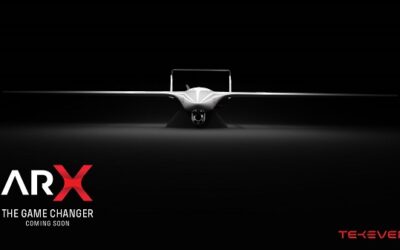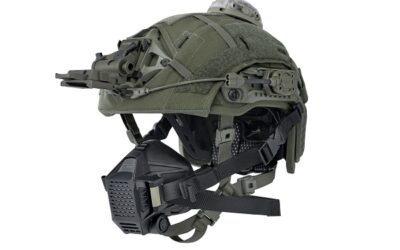Darkness can be an asset in a tactical situation, or a liability. The same can be said for light.
The challenge is in cleverly utilising each at will to achieve the tactical advantage. Being able to change a situation from being shrouded in complete darkness to illumination by a directed brilliant beam of light, particularly one that is unexpected by those so suddenly illuminated, can provide a critical edge in an encounter: Just think of the dazzling effect of full beam headlamps on a dark road at night. Moreover, in a situation where hostages or non-combatants may be present positively identifying who or what one is facing is imperative.
Image Intensifier (I2) weapon sights and night vision goggles (NVG) have limitations in providing clear identification, depending on the quality of the imagery that they generate; witness the fuzzy, eerie green light that some night vision devices can produce; and may not even be able to provide an image if ambient light is not available which can be the case in rooms, hallways, basements and tunnels. This is because conventional night vision technology relies on at least some ambient light being present so that, put simply, light particles can be amplified to create a night vision picture. In these cases the use of visible ‘white’ light or, alternately providing infrared light to supplement the ambient light for I2 devices is necessary and may even be preferred by operators. A tactical team instructor with former infantry background stated to MT: “The tactical light remains the single most effective system for addressing search, identification, control and engagement in indoor limited visibility situations.”
Tactical Lights
Available tactical lights include incandescent designs which use a filament or charged gas for their illumination, such as Xenon. Filament lights are brighter (intensity is measured in lumens) but the charged gas lights are more rugged and use less power, meaning they can be lighter to carry and have a longer battery life. The introduction of advanced LED (Light Emitting Diodes) from the late 1990s has opened new possibilities with not only increased intensity; up to 100 lumens per watt of electricity consumed for LED lights, compared to up to ten lumens per watt consumed, for conventional filament designs, but also the ability to produce infrared (IR) light, by using IR LEDS, to complement night vision devices. Handheld, weapon mounted and helmet-mounted tactical lights offer the ‘power of light’ to a wide range of applications for the military, law enforcement and first responder communities.
Despite the design being almost 120 years old, developed as it was in 1899 by David Misell, a British inventor, the portable torch, or ‘flashlight’ to those in North America, has been a welcome tool for law enforcement and security officers since its introduction. A former SWAT (Special Weapons and Tactics) officer and instructor articulated that, “the flashlight is an indispensable tool. Yet, depending on its use, it can be an asset or a liability.”
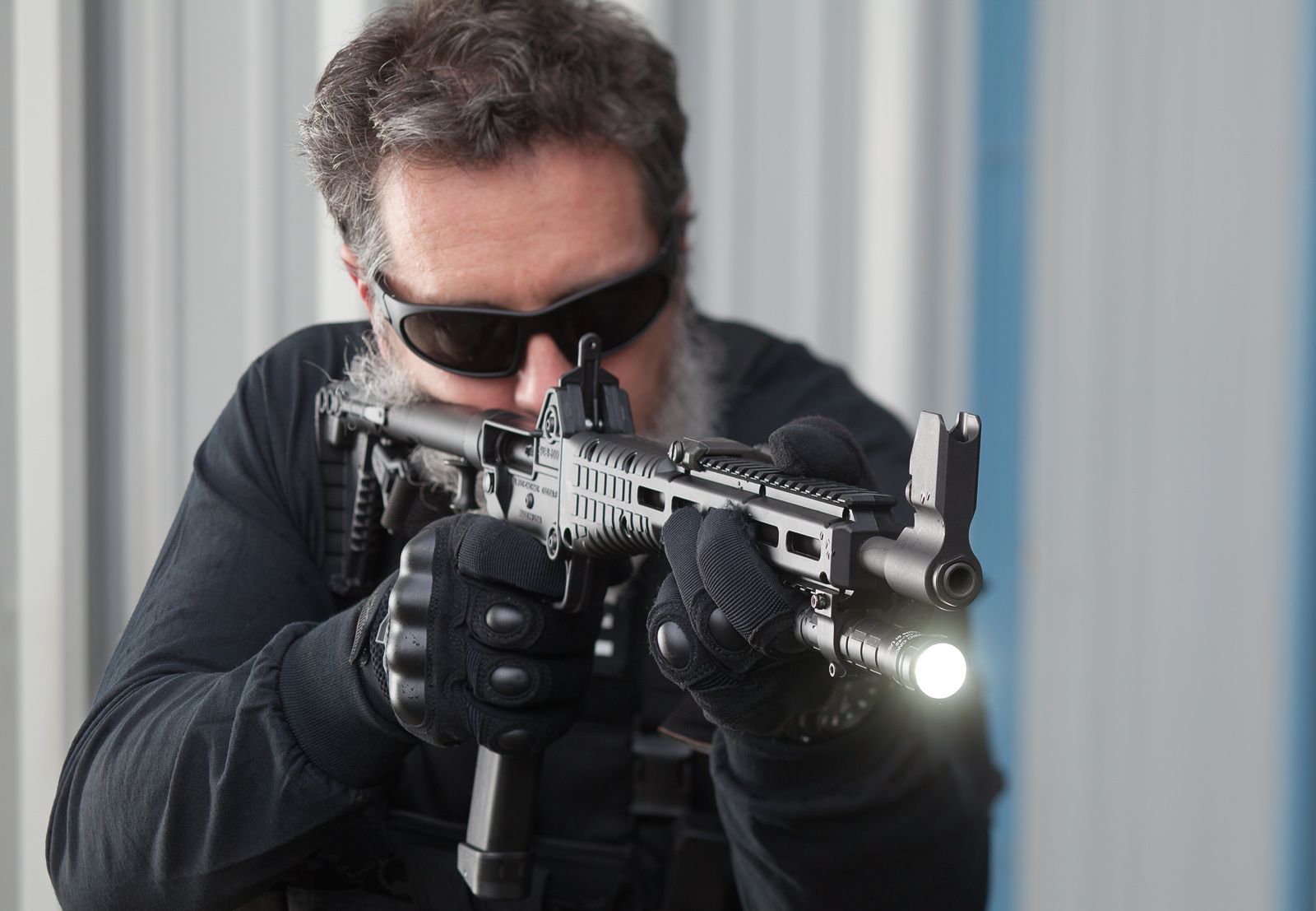
It is possible to use a torch it with a firearm in a tactical situation. Klarus offers a full line of compact lightweight tactical torches that customer reviews have stated feel comfortable in your hands and which can be programmed to individual preferences. Their XT11GT weighs a mere 130g (4.58oz) without battery and is waterproof to a depth of two metres/m (six feet/ft), all the while offering a maximum output of 2,000 lumens (lm). The XT11GT is a traditional ‘tube’ design while Klarus’ RS series designed for search and rescue has a unique ‘stacked’ triple lamp producing 3,450lm and boasting up to 18 days of battery life.
Another popular tactical light is the Fenix PD35TAC programmable light, which can operate in six output modes including strobe and the visual representation of the international Morse Code distress signal illustrating some of the other tasks which tactical lights can perform. Fenix also offers rechargeable lights and lights performing IR illumination. Some of its tactical lights can also be used as weapon lights via the use of a special mount. This offers the benefit of having a common light for both hand and weapon use.
A very popular company is Coast, introducing the HP8R rechargeable pure beam focusing flashlight. It has all of the usual tools like a one-handed slide focus, strobe and patrol light brightness (760lm at high output). There are two qualities that make this light outstanding. First, it is dual power.
Unscrewing the cap in the back exposes a USB plug, giving the user the ability to charge it anywhere. It also takes four triple A batteries. Second, it is extremely lightweight (204g/7.2oz), a consideration for officers who carry lots of equipment on their belt. The Beam Lock System ensures that users keep the beam in place while they work without risk of losing the perfect lighting. With Coast’s commitment to quality, the HP8R Flashlight is impact resistant, weather resistant and its LED is virtually unbreakable. The HP8R Flashlight is backed by Coast’s lifetime warranty against defects in materials and workmanship. Tested and rated to ANSI/FL1 standards.
Another favourite is Streamlight’s ProTac series of torches, with the new 500lm ProTac 2L-X being an EDC light that is available two ways: The ProTac 2L-X USB (111g, 3.9oz) is a complete rechargeable system that includes the company’s new 18650 USB battery with an integrated USB charge port; and it includes two CR123A lithium batteries. Both feature MULTI-FUEL innovation that allows them to accept Streamlight’s 18650 USB battery or CR123A lithium batteries, ensuring the user will always have a beam when he/she needs it.
Last but not least, Peli rugged tactical torches are designed for the most demanding professionals, like the army, police and other divisions in the homeland security sector. Some of the company’s tactical torches have been developed with them to fully meet their needs. The efficiency of the latest LED technology, the special features developed to withstand their job challenges together with Peli legendary toughness, make these tactical lights suitable for any critical mission. Peli tactical lights feature powerful light beams of up to 944lm, a run time of up to 69 hours and can reach a distance of 359 metres. Equipped with the latest next generation LEDs, they generate a powerful beam that cuts through smoke, fog, rain, dust or the worst cloudy conditions. In addition to the torches, Peli has a wide selection of Remote Area Lighting System (RALS) truly necessary for checkpoints and military fields illumination.
Torch use continues to be taught for law enforcement and military tactical situations, providing the user with a degree of flexibility. For example, the light can be positioned away from the body, preventing an adversary using it as convenient aiming point. Nevertheless, the use of a torch does not allow two-handed pistol shooting potentially degrading weapons control and accuracy should an engagement be necessary. Conversely, the handheld torch is preferable for searching and tasks where a threat is not anticipated. The introduction of weapon-mounted lights and the common provision of accessory mounts like the Picatinny Rail, which is now also routinely used on law enforcement weapons, particularly rifles, alongside military firearms, has stirred a debate over which is the better solution; handheld, or weapons-mounted? However, as both designs have become lighter, more compact and easier to use experts and instructors are increasingly suggesting that the two techniques complement one another. Used together they confer the operational advantage of each while reducing the disadvantages.
Weapon Mounts
As one special tactics instructor reflected to MT, “a tactical light mounted to any firearm provides convenient, pointable, accessible illumination which is a huge advantage and increases shooting ability in the dark.”
That said, one drawback is that a weapons-mounted tactical light means always pointing the weapon even when not intending to use it; a violation of a basic principle of tactical engagement. As the instructor emphasised, “it is not an acceptable practice to point a gun at someone simply because your tactical light is attached to it.”
Another drawback is that using the light also tells any opponent exactly were the user is, i.e. directly behind the light.

Lights can be offered with several accessories providing optional capabilities like a remote switch that can be placed on the weapon’s grip, stock or elsewhere permitting the user to operate the light with minimal finger movement. These facilitate using a pulse or, as Mr. Vickers’ promotes, ‘flashbulb’ technique where, “a minimal amount of white (or even infrared) light is used to identify the target, then if needed another ‘flashbulb’ application to determine if it is a threat.”
To this end, Fenix’ AER-02 noiseless (no clicking sound) remote switch allows selecting momentary on, constant on and mode/output selection.
Manufacturers are capitalising on new technologies, increased processing, and miniaturisation to incorporate addition functions into illumination devices. These include, as mentioned, the ability to programme various beam widths, intensities, beam durations and additional effects like strobes. This last function is relatively new and produces what is called the ‘flicker vertigo’ or ‘Bucha effect’ where a bright enough light turning off and on at a frequency of between 4-20Hz (one hertz is equal to one illumination per second) can cause mental effects such as disorientation, confusion, headaches and even nausea. The strobe function on tactical flashlights flickers the light within this range and, when coupled with a strong light intensity, can offer users a useful a non-lethal option to incapacitate an opponent.
Weapon Lights
The weapons-mounted light has the advantage of being able to be used with pistols, rifles and shotguns. With new, small-sized batteries and smaller high-intensity bulbs rugged enough to able to accept weapon recoil, such illumination devices have become lighter and more compact. The Surefire X300 Ultra light, for example, weighs only 113.5g (4oz) and is only 90mm (3.6in) long and 6.25mm (1.25in) in diameter. It can be mounted on a pistol or longer weapon and produces a 600lm beam. It is activated using an ambidextrous switch located at the rear of the light’s body that requires one finger to operate. The Streamlight TLR-6 is even smaller, weighing in at 36g (1.27oz) without batteries and is only 57mm (2.3in) long. It is an ideal pistol light to equip even the smallest handguns. A new favourite by MONS Gear Box is the small and mighty TLR-8 with a red laser that securely fits a broad range of full-size and compact handguns. Its low-profile design prevents snagging, and a “safe off” feature prevents accidental activation, saving batteries or revealing in night time operations.
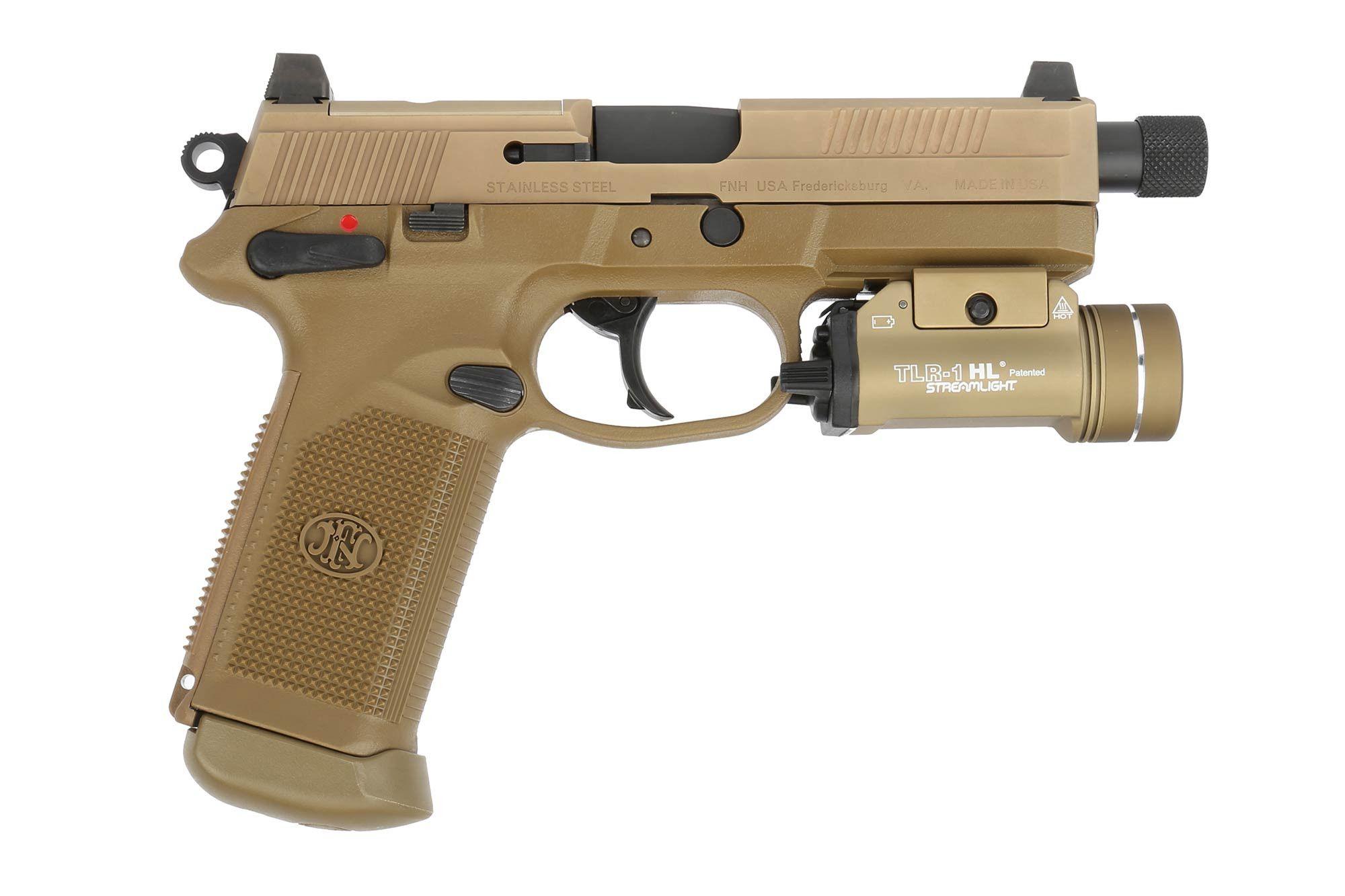
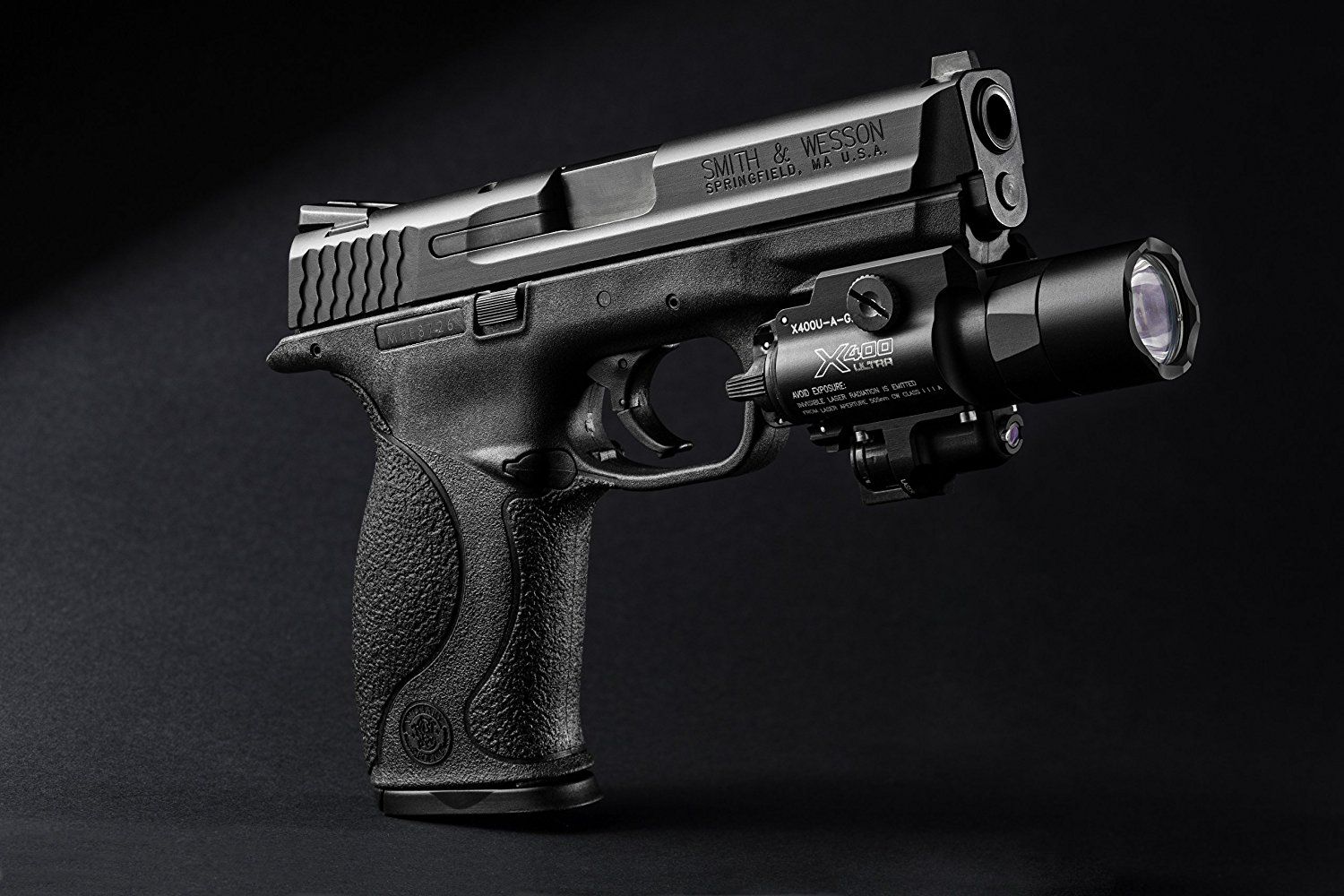
These devices, and most other lights, are typically fitted to a weapon via a Picatinny Rail or Universal mount. In this way the light beam is bore-sighted with the barrel. Where ever you point the weapon the light is also aligned and visa-versa. One consideration for the user, however, is that too much light intensity can be detrimental, something that is not a concern with handheld lights. Generally it is recommended any light should not exceed between 500-600lm with a tighter focused beam. Some lights allow for adjusting their intensity and focus. The ‘colour’ of the light is also important with the yellowish-green spectrum optimal for human vision.
Weapon lights can be equipped with various optional features. Some of the more common are an offset light mount, a quick release, a remotely activated pressure switch and tactical lights with a combined laser pointer. An offset mount positions the light to the side of the handgun rather than directly below the barrel. It places the light and switch near the shooter’s thumb when they are holding the weapon and also frees up space underneath the barrel. A quick release for the light is useful when it is necessary to take lights on and off the weapon frequently. Remote switches can be positioned on the grip of a handguns and the tape switches (switches which are activated when pressed anywhere along their length) usually on the stock for longer weapons. Both these switch designs allow the light to be operated with minimal hand or finger movement, thus, maintaining sighting.
Laser Sights
A tactical light laser combination provides a pistol light for illumination and a laser for aiming. The laser aimer is directly alighted with the line of fire. Therefore, where the laser ‘spot’ is laid is where the projectile will hit when the weapon is fired. Laser sights are available which emit green light with a wavelength of 525.9 terrahertz/THz to 605.6THz or red light with a 399.7-483.5THz wavelength.
Currently, red lasers are more compact and lower priced, however, green is more visible under a wide variety of lighting conditions including in daylight, and at longer ranges, but is bulkier and has a higher acquisition price. Streamlight offers both its TLR-4 with C4 LED technology providing to up to 125lm white light plus a 454.2-468.4THz red laser It also offers the Surefire X400 Ultra Green and Surefire X400 Red, both of which produce 600lm of white light illumination and also emit either green or red laser light.
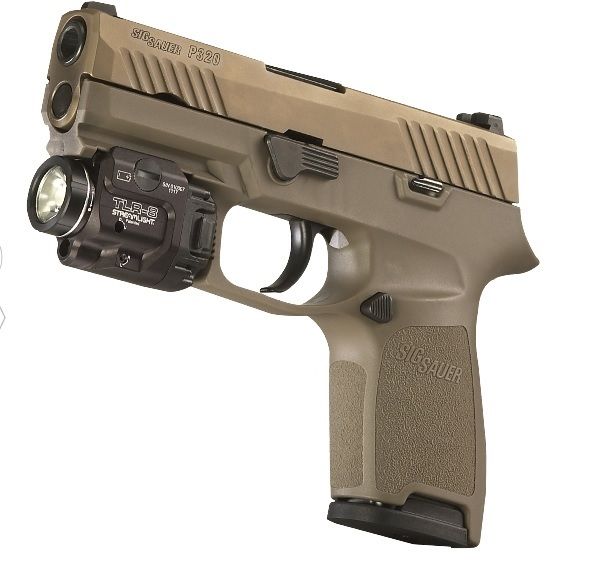
However, it is generally recognised that a laser sight in either green or red offers advantages in low/no visibility situations. Tim Brandt, a spokesperson for Viridian Weapon Technologies suggests that, “overall, lasers enable users to quickly and effectively engage a threat and neutralise that threat if needed. The green laser, as in our green laser’s 563.5-587.8THz wavelength range is near the centre of the visible spectrum. This means it more highly perceived by the human eye. The green can also be up to fifty times brighter than red.”
Viridian’s X5L Gen.3, the latest version of its original 2008 unit, is an example of a compact pistol sight and light combination. It uses the green laser combined with a 500 lumen CREE LED light. Its modes include not just strobe for the LED, but also pulsing laser and/or visible light. They also offer an ‘instant on’ mode which allows the light and laser to activate when the weapon is drawn from its holster.
B.E. Meyers and Co.’s GLARE series of weapon mounted lasers is the most advanced Ocular Interruption System available capable of providing effective Hail and Warning. Featuring B.E. Meyers & Co.’s patented SmartRange technology, the GLARE RECOL, GLARE HELIOS and LA-22/U provide immediate and recognizable visual warning from 4m to 20km and beyond while maintaining eye safe power output on target.
Weapons illumination, as this article has illustrated is not a luxury, but a necessity for the law enforcement and military professional alike. Fortunately, they both have a wide array of products to choose from, offering a diverse range of illumination options in the visible, laser and infrared spectra. Such equipment can vastly improve situational awareness and help to ensure the correct split-second decisions are made, when darkness can degrade one’s visual senses.
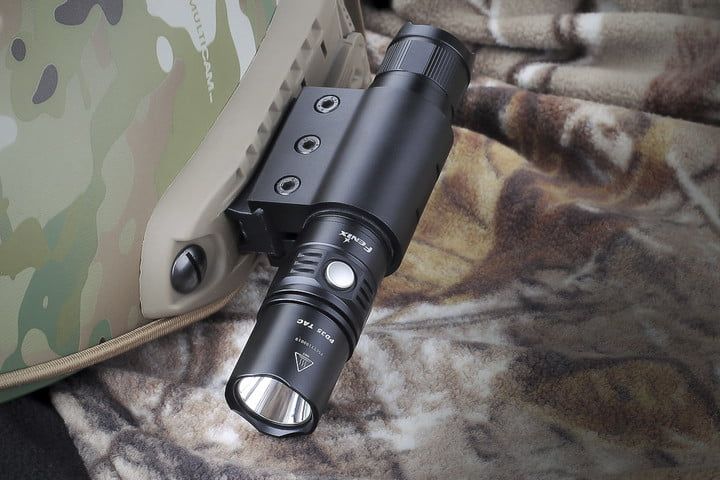
Stephen W. Miller is a regular contributor to the Mönch Publishing Group’s stable of publications. This article originally appeared in our sister magazine SAFETY & SECURITY INTERNATIONAL and is used here in a more militarised form.

